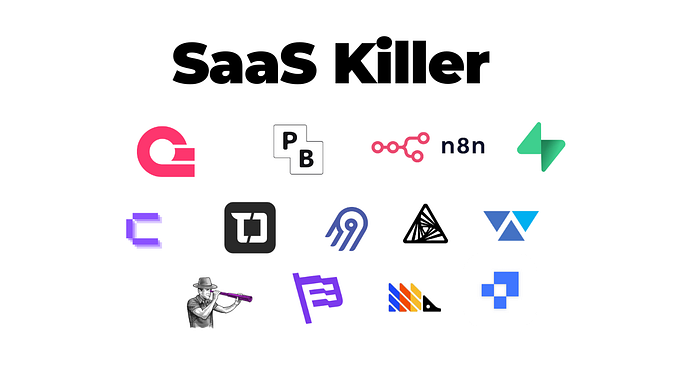Introduction to technical indicators: top-3 overview

The history can teach us great things! It’s a well-known fact proven by many traders that empower their strategies via trading instruments based on the price history. Some of them analyze market cycles with 4 stages repeating over and over again, while others use trading patterns as signals for a potential movement of the market. Trading indicators are also among popular tools that may reinforce trading strategy.
Since you begin your trading adventure, there is no doubt you face a broad variety of trading indicators. They might seem to be complex in use and difficult to understand. But don’t run away. We believe that simple is best. That is why in this article we provide an ABC guide on three major groups of technical indicators and give examples of the most popular ones.
Technical indicators are the algorithms based statistical processing of past price-data, volume or open interest information (if you trade futures). Generally, they are used to confirm and supplement a trading setup (trade entry, exit, adjustment).
Today we can distinguish three major groups of trading indicators, depending on the data used in their calculations:
- Trend-following indicators
- Momentum indicators
- Volume indicators
Let us review each group in detail and focus on the most widely used indicator from each of them.
1. Trend-following indicators: Trend is your friend
As the name implies, these indicators are used to reveal trends and their strengths in the market. You may say that it’s easy to catch a trend, just looking at the chart, however, not all the trends are that obvious from the very beginning. Thus, trend-following indicators serve as signals to determine an early trend formation or reversal. This way, you can at least make you more prepared for a new market rally.
Moving average (MA)
Moving average is one of the simplest indicators to determine an upcoming trend and strong support and resistance levels. MA represents an average closing price over a particular period of time, eliminating short-term fluctuations in the market and revealing the overall direction of the trend.
An indicator can be customised with the time periods that are chosen according to trading strategy, be it short term (MA’s for 5–20 days), middle (up to 60 days) or long term (100 and more days).
To identify trend direction, simply compare the current price with the MA over a set period of time. In this case, you will reveal how the current price dynamics differs from its past movements and use the signal in your trading strategy.
“Buy” signal: Current price is higher than MA line. It means that the price is trending up and probably it’s time to enter the market. A chart below illustrates the confirmation of the bull rally in summer 2019, when the price soared from about $5000 to $13000 in a couple of months.
“Sell” signal: The opposite case is when the price is trading below MA indicator. It could be interpreted as a bearish sentiment dominating the market (the price moves higher than it used to move before). A chart below presents the bearish trend confirmed by MA in April 2019.
Reverse trend signal: As you’ve probably noticed, if MA crosses the current price of an asset, you can expect the trend to change its direction. Therefore, along with other trading tools, MA acts as a signal to enter the market, catching a trend at the very beginning. Or, on the flip side, quit the market timely, grabbing maximum profits. On the chart below, you can see the illustration when the bullish trend of the first part of 2019 was confirmed by the MA.
Moving average cross
It’s also common for traders to use two moving averages on a single chart, assessing short and long term trends at the same time. The pairs of MAs can vary, depending on your strategy. As an example, it is possible to use MAs of 50 and 200 days for a long-term strategy (the most popular combination), or MAs of 15 and 50 days for the short-term.
‘Golden cross’ as a signal to buy:
Thus, when a short-term moving average crosses above a long-term moving average, it means that currently the prices are in uptrend. This pattern is called ‘Golden cross’ and may be a signal to open a long position.
‘Death cross’ as a signal to sell:
In case of ‘Death cross’, a short-term moving average crosses below a long-term moving average, determining a potential bear rally (short-term average prices are lower than long-term).
So, moving averages smooth out price action, helping traders assess both short and long-term trends and get a more holistic view of the market. They are easy to understand and flexible enough for application in various strategies. By the way, MAs also serve as a base for other widely used indicators, for example, Moving Average Convergence / Divergence (MACD) or Bollinger Bands.
However, keep in mind that MA is a lagging indicator. In other words, it reflects what is happening in the market right now, giving meaningful interpretations and confirming the price action. Thus, it is not used as a predictive indicator, it’s rather about confirmation.
2. Momentum indicators: Buy low, sell high!
One more group of indicators that might reinforce trading strategies is momentum indicators. They are used to evaluate the relative strength of the price movements over the time. They help traders identify the spot points (reverse points) of the market. In other words, momentum indicators determine if an asset is overbought or oversold currently and, therefore, assess the quality of buy or sell signals.
Generally, momentum indicators are used in conjunction with trend-following ones, as they are focused on the strengths of the price (momentum). Note please, that such indicators cannot be used for determination of the trend direction.
Relative Strength Index (RSI)
The Relative Strength Index (RSI) is one of the key momentum indicators. In brief, its value is based on a ratio between the average prices during bullish and bearish periods (minutes, hours, weeks, days and so on). Thus, RSI is calculated as follows:
RSI ranges between 0 and 100 and generally is based on data of 14 time periods or more. Traditionally, RSI is interpreted the following way:
“Sell” signal: If RSI exceeds 70, it means that the market is overbought, or overestimated, therefore, the price may be primed for a bearish rally.
“Buy” signal: If RSI value of 30 and below, it means that the asset is oversold, or underestimated. Hence, its price might increase in the foreseeable future.
On the chart below you can see the RSI signals confirming the upcoming movements in the market.
Thus, momentum indicators can be used to confirm the buy or sell signal and determine a possible pullback based on the price movement relative strength.
Nevertheless, note that momentum indicators are used rather to confirm a trading setup in ranging markets, as during strong trends they tend to return false signals. Moreover, it’s worth mentioning that momentum indicators are recommended to be used as additional signals in a complex trading system to get a comprehensive view of the market dynamics.
3. Volume indicators
Trading volume is the amount of assets being traded on this trading pair or market during a particular period of time. It can be also described as an interest in a particular asset. Obviously, volume growth results and price movement are interconnected in the majority of cases. Thus, trading volume indicators may anticipate the future price movement.
On Balance Volume (OBV)
OBV is one of the useful and easy to understand indicators that determine the level of interest in the asset. It compares its volume flows against its price over a particular period of time, confirming a trend or indicating a reversal movement.
OBV is calculated by keeping a running total of the volume figures and:
(1) adding in the volume, if the closing price was higher than the previous period;
(2) subtracting the volume, if the closing price was lower than the previous period.
Trend confirmation
One of the most popular and simple ways to use OBV is to confirm the current trend. The rule is simple: to confirm a trend, OBV should follow the price dynamics. Thus, if the price is rising, the OBV line should keep pace with it, climbing up. In the case of the downwards trend, the OBV line should decrease as well (as you can see on the chart below).
Price reversal
Furthermore, OBV can act as a price reversal signal in case of the divergence (when the price movement is not confirmed by OBV). In other words, if you see that the current price is trending higher, while OBV either stays flat or drops, it means that the interest is weakening. Therefore, it’s a warning signal, indicating potential reversals in price direction. The chart below illustrates the price reversal determined by the OBV line that was trending down during the price growth:
On the flip side, obviously, if the price is decreasing, while OBV is growing or at least stays flat, it’s a sign of bull rally.
Hence, volume, being closely interconnected with the price dynamics, can help you to recognize a trend or reversal beforehands. Nevertheless, note that OBV has some limitations. For example, a significant volume spike may throw off OBV for days or even months. So, it is also recommended to be used along with other trading signals and setups.
Thus, technical indicators, even being based on different data and calculation algorithms, are used mostly to anticipate or confirm the price movements. They can perfectly complement your strategy, providing you with actionable insights on the price dynamics. However, it’s worth considering the following issues:
- Less is more. Many traders use numerous indicators that are focused on the same type of information. It’s a typical mistake that often sidetracks traders by excess of information helpless in trading. Therefore, pick up a few of indicators that fit your strategy and use them to reinforce it.
- Apply a multi-indicator strategy. When choosing a set of technical indicators, try to focus on various types of them to make them complement each other (for example, use three indicators — volume, trend-following and momentum).
- Develop a well-rounded trading system. Although technical indicators can be powerful tools, remember that they are valuable in conjunction with other trading instruments only. In other words, don’t blindly sell an asset just because RSI decreased to 30. Use it as an additional signal. Look sharp and apply a trading system with a set of rules.
To sum up, technical indicators may tell you more than you see on the chart, being your additional source of information to supplement your trading setup. Therefore, study them carefully before including in your strategy, consider their limitations and use their full potential to improve your trading performance. Note that we reviewed the top-3 popular technical indicators, however, there are plenty of other indicators that might fit your strategy. Reveal the best ones for you and take your trading to the next level!
Stay tuned for updates!
Telegram Channel: https://t.me/bizonex_news
Telegram Chat (English): https://t.me/bizonex_eng
Telegram Chat (Russian): https://t-do.ru/bizonex_ru
Facebook: https://www.facebook.com/bizonex
Twitter: https://twitter.com/bizon_ex
Reddit: https://www.reddit.com/user/Bizonex









